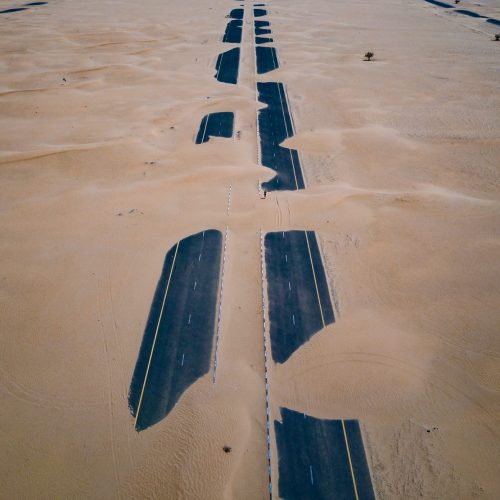The future of airports
Great cities of the past were built around ports and railway stations. But in today’s globalised world, airports are arguably the most important link to prosperity. Digital communications allow us to talk to or trade with anyone, at anytime, anywhere in the world. But if we want to actually meet them or receive the goods we’ve bought, by far the fastest way is by plane.
“There is an ever-increasing thirst for travel, whether for business or leisure. We want more from our airports, our aircraft, our journeys, and more for our communities” – Tim Morrison WSP
Aviation is a catalyst for economic growth, enabling people and businesses to reach a global marketplace for goods and services and to travel for work, leisure or education. A study of the impact of European airports found that a 10% increase in a country’s air connectivity was associated with a 0.5% increase in GDP per capita. Airports and associated aviation activity create and facilitate €675bn in GDP each year, just over 4% of the entire European economy.
People as cargo
Air freight is essential to modern life, but it is in the movement of people that airports have the greatest effect on economic development. Researchers studying the impact of US airports found that higher economic output, wages and incomes, the share of college graduates and high-tech industry all correlated strongly with the number of passengers per capita, rather than with flights or cargo. “In today’s knowledge economy, far and away, the most precious cargo [airports] move is people,” said Richard Florida at the University of Toronto.
John Kasarda, author of Aerotropolis, describes aviation as the “physical internet” underpinning global trade. As the virtual internet exponentially increases the connections between people and places, the physical one will have to keep up.
Airports are expensive and asset-intensive — and most of that investment has to happen upfront, before a single plane can land. “Airports are under intense pressure to expand and to make very large capital investments to renew their facilities,” says Jason Brooks, aviation director at WSP. “The pace of change has been very dramatic over the last decade, and it will be even more so over the next.” Projects are becoming larger, as the scale, quality and associated infrastructure increases. And they’re more complex too, because the building work must be completed without interrupting airport operations.
Airports are expensive and asset-intensive — and most of that investment has to happen upfront, before a single plane can land.
Flying is business
They may be essential infrastructure, but airports also have to make money. With investment has come a greater emphasis on profitability and returns. Until relatively recently, nearly all major commercial airports were government-owned and operated. The UK was the first to privatise its airports authority in the mid-19780s, and since then, deregulation has led to a proliferation of different ownership and management models. In 2017, 51 of the busiest 100 airports had some private sector participation, five more than in 2016. Of the busiest 500 airports, 39% had private sector participation, a one percentage point increase on 2016.
“The fundamental motive for airport privatisations is to finance upgrades or expansion that states are unable to pay for,” says Stefano Baronci, director of economics at Airports Council International (ACI) World, the international organisation that represents airports. “In an economic climate where states are increasingly cutting expenditure to reduce debt, government financing and full ownership is not always sustainable. Even government-owned and managed airports are increasingly required to have a commercial focus. Private capital needs to generate fair returns proportionate to the risk.”
How does this compare around the globe?
Airports operate in a market that is tougher than ever. Liberalisation opened the door to a new, disruptive breed of carriers such as Southwest, Ryanair, Condor, Easyjet and AirAsia, which now account for around one-third of air traffic worldwide. To keep fares low, they offer a no-frills service and demand that airports do the same. Traditional airlines have had to follow suit to compete. So airports’ core aeronautical activities have become less profitable, and they are more dependent on other sources of income.
Passengers are key
To stay in business, airports need to keep passengers streaming through their departure gates and through their shops, restaurants and bars. We may be paying less for plane tickets, but one way or the other, we’ll be paying more for bigger, better airports.
The global aviation industry operates on a “hub and spoke” model, so airlines typically route passengers through hubs that serve many destinations, rather than offering point-to-point flights between every single combination. This means they can serve a greater range of places more efficiently, and that passengers have a choice of possible routes — and places to make their connection.
The ambitious mega-hub
The biggest hubs were traditionally in the US and Europe, but a new breed of ambitious mega-hubs has come online across the Middle East and Asia. The global pattern of air traffic is shifting eastwards, as population growth and prosperity is swelling the numbers travelling for work and the middle classes who can afford to fly for leisure in countries such as China, India and Indonesia.
By 2022, passenger traffic in emerging economies will overtake advanced economies. By 2040, airports in emerging economies will handle 61.6% of passengers — 10 billion more each than they do today.
In an increasingly crowded global market, the world’s hubs are pitted against one other to attract a fickle footloose customer base.
“Certain locations are more convenient, but it’s all about the level of service that people experience when they’re travelling”, says Brooks. “Transfers are a very different experience – most people probably never go outside of the airport”.
Smaller airports, meanwhile, will compete among themselves to attract the most direct flights and be the best-served gateway to their region.
In a global beauty contest, they all need something to set them apart.
For more articles like this visit www.the-possible.com



